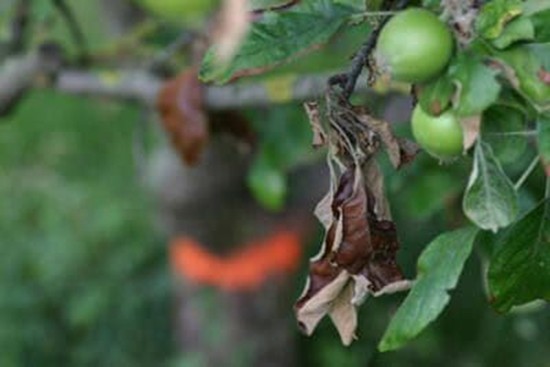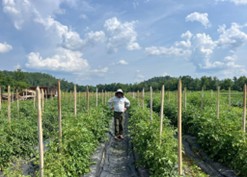In the 2018 Farm Bill, Congress authorized mandatory funding for organic research that moved to $50m/year. The Trump administration has been in a process of reviewing many types of research grants for administrative priorities. It is now highly unlikely that the organic sector will have a call for proposals before the end of the year.
Money not contracted by September 30 will return to the Treasury in an action known as impoundment. Impounding congressionally mandated funds is not legal. We have been in contact with senate and house ag committee leadership who are expressing their concerns as well.
Research helps all of us in organic, from farmers to consumers. OTA has asked our colleagues and members at Organic Farming Research Foundation to author the piece below on the value of organic research.
OTA will work with all of our partners to continue to advocate and protect organic.
– Matthew Dillon, co-CEO, Organic Trade Association
What makes organic farming thrive? It starts with farmers—innovators, problem-solvers, and land stewards—working with nature to build healthy soil, nurture biodiversity, and grow resilient food systems. Organic systems wouldn’t exist without their commitment to doing things creatively and with positive solutions in mind, often in the face of uncertainty.
At the Organic Farming Research Foundation (OFRF), we’ve seen how compelling, meaningful research at the right time, especially when shaped by farmers’ questions, can be a powerful tool to move the industry forward. Public investment in organic research helps translate on-farm wisdom into tested practices, stronger crops, and decision-making tools that support both ecological and economic resilience. Research helps farmers overcome barriers and gives organic and transitioning-to-organic operations a greater shot at success.
However, organic research has historically been underfunded. Although organic products represent over 6% of U.S. food sales and more than 15% of produce sales, less than 2% of the USDA’s research budget and under 1% of ARS (define ARS) funding go toward organic-specific research. This gap not only endangers farmers but also negatively affects supply chains and the entire organic market.
Research That’s Rooted in Real Life
Through programs like the Organic Research and Extension Initiative (OREI) and the Organic Transitions Program (ORG), USDA has funded thousands of projects that directly address the needs of organic producers. Between 2015 and 2021 alone, these programs supported work on:
- A long-term systems trial at USDA’s Beltsville Agriculture Research Center, which explores organic field crop rotations for improved nutrient cycling, weed control, greenhouse gas mitigation, and economic returns.
- Biological pest controls like anaerobic soil disinfestation (ASD), a NOP-compliant alternative to soil fumigation used in projects at Penn State University and the University of Tennessee, to reduce pathogen loads and promote a disease-suppressive soil microbiome to protect organic vegetables and strawberries.
- Budgeting tools to help producers navigate transition, including organic crop and whole-rotation budgeting tools developed to help new and aspiring organic farmers assess and manage the economic risks of organic transition.
- Education for cultivar development in organic conditions, like UC Davis’s Student Collaborative Organic Plant Breeding Education (SCOPE) program, which trains future breeders while developing crop varieties suited to organic environments.
These projects are practical, grounded, and collaborative. They reflect the belief that farmers and researchers working together can solve the most pressing challenges facing our food system, from disease pressure to profitability to climate resilience.
And the value of these projects doesn’t stop at the farm gate. Through research, businesses gain greater access to more reliable, high-quality sourcing. Processors and retailers benefit from a consistent supply and stronger transparency. And consumers have access to food that reflects their values and is backed by science.
According to the USDA’s Economic Research Service (ERS), every $1 invested in agricultural research returns over $20 in economic benefits. That’s a powerful argument for continuing and growing these programs.
Stories That Speak for Themselves
While we could point to dozens of projects that are making a difference right now, here are just a few that illustrate what this kind of investment makes possible:
Managing Fire Blight Organically

After antibiotics like streptomycin were banned from organic apple and pear production in 2014, growers needed new tools—fast. In the Northeast, Dr. Quan Zeng is working with organic orchards across four states to test a yeast-based biocontrol that activates plants’ natural defenses. This OREI-funded project protects trees and harvests while also offering a solution that conventional farmers are beginning to adopt as well.
Living Mulches for Organic Corn
Dr. Renata Nave Oakes, based in Tennessee, is leading an ORG-funded project to improve organic corn systems in the Southeast, where supply lags behind demand. Her team is testing legum living mulches that suppress weeds, fix nitrogen, and maintain yields—all while conducting economic analysis to help farmers weigh costs and benefits. It’s the kind of breakthrough work that lays the groundwork for long-term crop viability.
Breeding Tomatoes that Can Take the Heat
 In North Carolina, Dr. Dilip Panthee is combining traditional and molecular breeding methods to develop disease-resistant tomato varieties adapted to organic systems and increasingly erratic climate conditions. His ORG-funded work has already produced hybrids with resistance to late blight, tomato mosaic virus, and more—providing much-needed support to growers and potentially revitalizing domestic organic tomato production.
In North Carolina, Dr. Dilip Panthee is combining traditional and molecular breeding methods to develop disease-resistant tomato varieties adapted to organic systems and increasingly erratic climate conditions. His ORG-funded work has already produced hybrids with resistance to late blight, tomato mosaic virus, and more—providing much-needed support to growers and potentially revitalizing domestic organic tomato production.
Each of these projects is grounded in collaboration with farmers and rooted in a desire to solve real problems. They reflect the strength of a research model that listens first, responds to regional needs, and delivers practical outcomes that move the entire organic sector forward.
Why This Matters Now
At a time when producers are already navigating climate extremes, shifting markets, and rising costs, the current funding level just doesn’t cut it. These programs support more than research. They support the tools, knowledge, and partnerships that allow organic producers to keep doing what they do best: caring for the land, feeding their communities, and innovating toward a more resilient future.
The strength of the organic sector depends on strong farmers, healthy soil, and a consistent commitment to listening, sharing, learning, and adapting. That’s what research allows us to do.
To continue growing in organic acreage, market share, and trust, USDA must continue investing in the science that supports it. At OFRF, we’re proud to stand alongside farmers, researchers, and advocates working to ensure that future.
Whether you’re sourcing ingredients, growing crops, or developing organic product lines, this work benefits you. Let’s protect and expand it.
Explore more stories and take action, like signing up for our free Communicating with Legislators email course, at ofrf.org/advocacy.
